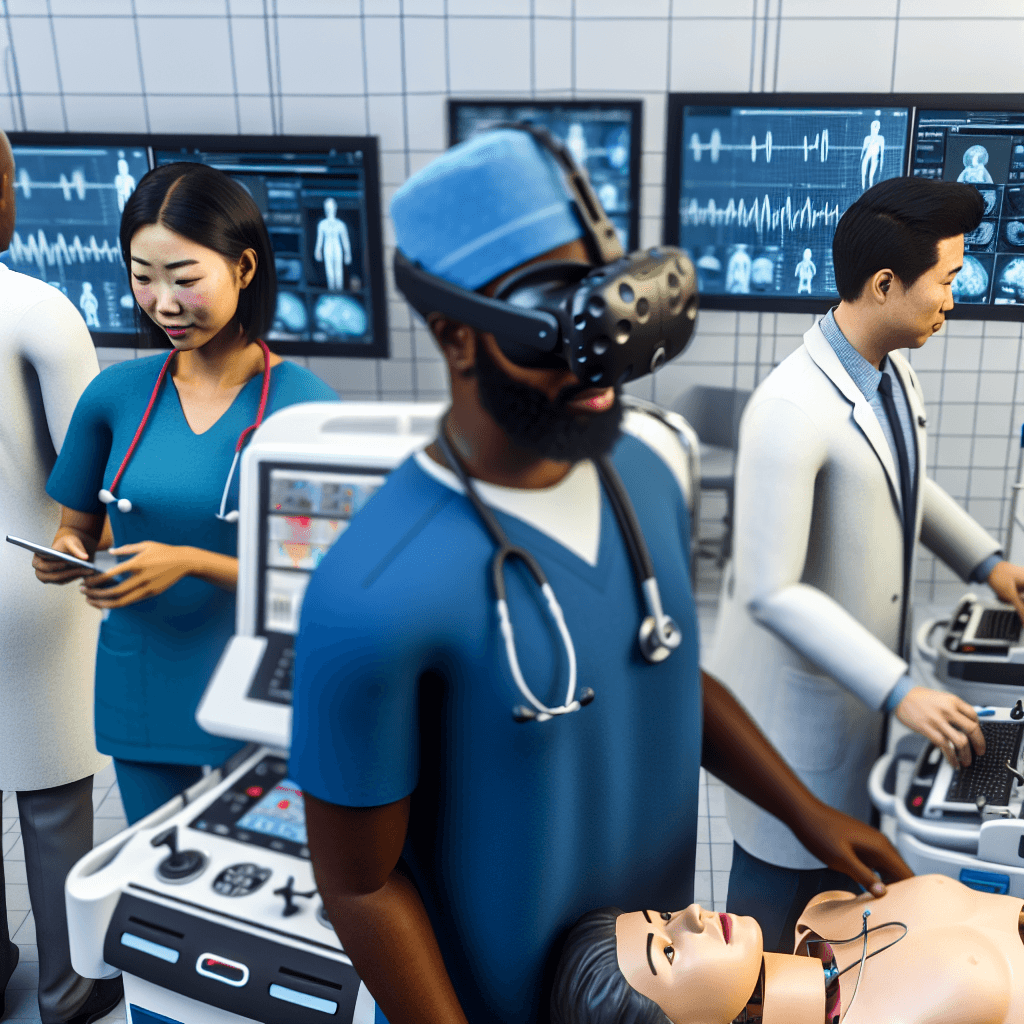Explore the healthcare simulation market trends, growth drivers, and forecasts, enhancing training and safety in medical settings.
Healthcare Simulation Market

Table of Contents
- Exploring the Healthcare Simulation Market: Trends, Growth, and Future Prospects
- Understanding Healthcare Simulation
- Current Trends in the Healthcare Simulation Market
- Key Drivers of Market Growth
- Challenges Facing the Healthcare Simulation Market
- Regional Insights into the Healthcare Simulation Market
- Case Studies: Success Stories in Healthcare Simulation
- Future Prospects of the Healthcare Simulation Market
- Conclusion
Exploring the Healthcare Simulation Market: Trends, Growth, and Future Prospects

The healthcare simulation market has emerged as a critical component in medical education, training, and patient safety. By leveraging advanced technologies, healthcare professionals can enhance their skills, improve patient outcomes, and streamline healthcare delivery. This article delves into the current trends, growth drivers, and future prospects of the healthcare simulation market, providing a comprehensive overview for stakeholders in the healthcare sector.
Understanding Healthcare Simulation
Healthcare simulation involves the use of simulation tools and techniques to train healthcare professionals, ensuring they are well-prepared for real-life medical scenarios. These simulations can be conducted in various formats, including manikins, virtual reality (VR), augmented reality (AR), and computer-based simulations. The primary goal is to enhance clinical skills, decision-making abilities, and teamwork in a risk-free environment.
Current Trends in the Healthcare Simulation Market
The healthcare simulation market is currently witnessing several transformative trends that are shaping its growth and development:
- Technological Advancements: Innovations in VR, AR, and artificial intelligence (AI) are enhancing the realism and effectiveness of simulation-based training.
- Increased Focus on Patient Safety: As healthcare institutions aim to reduce errors and improve patient outcomes, the demand for advanced training tools like simulation increases.
- Integration of Simulation in Medical Education: More medical schools and institutions are incorporating simulation into their curricula to provide hands-on learning experiences.
Key Drivers of Market Growth
Several factors are propelling the growth of the healthcare simulation market:
- Rising Healthcare Costs: Simulation helps in reducing healthcare costs by improving the efficiency and effectiveness of medical professionals.
- Technological Integration: The integration of cutting-edge technologies in simulation systems is making training more accessible and effective.
- Global Increase in Medical Education: As the number of medical students and institutions grows globally, so does the demand for simulation training.
Challenges Facing the Healthcare Simulation Market
Despite its benefits, the healthcare simulation market faces several challenges that could hinder its growth:
- High Cost of Simulation Systems: The initial setup and maintenance costs of high-fidelity simulation systems can be prohibitive for some institutions.
- Lack of Standardization: There is a need for standardized protocols and benchmarks to ensure the effectiveness and reliability of simulation training across different regions.
- Resistance to Change: Some healthcare providers may be resistant to adopting new training methods, preferring traditional hands-on patient experiences.
Regional Insights into the Healthcare Simulation Market
The healthcare simulation market varies significantly across different regions, influenced by local healthcare infrastructure, educational policies, and technological adoption:
- North America: Dominates the global market due to advanced healthcare infrastructure, high adoption of technologies, and substantial investments in R&D.
- Europe: Strong growth driven by supportive government initiatives, collaboration between academic institutions and industry, and a focus on healthcare education.
- Asia-Pacific: Rapidly growing due to increasing healthcare expenditure, rising number of medical schools, and growing awareness about the benefits of simulation in medical training.
Case Studies: Success Stories in Healthcare Simulation
Several institutions and companies have successfully implemented healthcare simulation systems, demonstrating significant benefits:
- Case Study 1: A major university in the United States integrated VR simulation in their nursing program, resulting in a 30% improvement in decision-making skills among students.
- Case Study 2: A hospital in Europe used patient simulators to train emergency room staff, which led to a 25% reduction in medical errors and improved patient outcomes.
Future Prospects of the Healthcare Simulation Market
The future of the healthcare simulation market looks promising with several developments on the horizon:
- Expansion into Low-Resource Settings: With the advent of more cost-effective simulation technologies, there is potential for wider adoption in regions with limited resources.
- Customizable Simulations: Future technologies may allow for fully customizable simulations tailored to specific patient cases or medical conditions.
- Greater Integration with Telemedicine: As telemedicine continues to grow, there is potential for integrating simulation-based training to prepare healthcare providers for remote patient care.
Conclusion
The healthcare simulation market is set to transform medical education and patient care significantly. With ongoing technological advancements and increasing global demand for skilled healthcare professionals, the market is expected to continue its upward trajectory. However, addressing challenges such as cost, standardization, and resistance to new technologies will be crucial for maximizing the potential of healthcare simulations. Stakeholders in the healthcare sector must collaborate to leverage these tools effectively, ensuring a safer and more efficient healthcare system for the future.
In conclusion, as we look towards a more technologically integrated future in healthcare, simulation stands out as a pivotal tool in shaping the next generation of healthcare professionals. By embracing these advancements, the medical community can ensure better patient outcomes and a more robust healthcare system worldwide.








